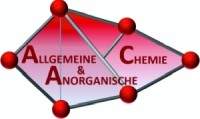Clusters
Stable Unsaturated silicon clusters
Unsaturated silicon clusters exhibit a silicon backbone with vertices with one, two or no substituent. In that they structurally resemble intermediates of gas phase reactions involved in the thermal decomposition of silanes, as well as sub-nanoscalar residues occurring in some forms of bulk elemental silicon (e.g. amorphous silicon). Our approach enables us to isolate compounds with structural motifs, study their molecular and electronic structure, as well as their optical properties
The first unsaturated silicon cluster was isolated serendipitously from the reaction of disilenide 1 with silicon tetrachloride in a 4:1 ratio. This afforded a equimolar mixture of Weidenbruch’s tetrasilabutadiene and the Si5Tip6 cluster 14. Systematic investigations then made available the intensely green hexasilabenzene isomer 15, which on the basis of its unusual thermal stability and backed by computations in collaboration with Henry Rzepa (Imperial College London, United Kingdom) was assigned aromatic character. Due to the differences in the substitution pattern between 15 and the hypothetical hexasilabenzene we proposed the term dismutational aromaticity for the phenomenon alluding to the formal dismutation of oxidation state of the silicon atoms.
The dismutational isomer 15 rearranges to a bridged propellane structure 16 upon melting (>200°C). The bridged propellane 16 represents the global minimum on the Si6H6 potential energy surface and is as such the “energetic” analogue of benzene in the corresponding carbon case. The magnetically induced ring and cluster currents result in unusual properties that we aim to rationalize by the computational analysis of such currents in collaboration with Raphael Berger (Paris Laudron University Salzburg, Austria) .

